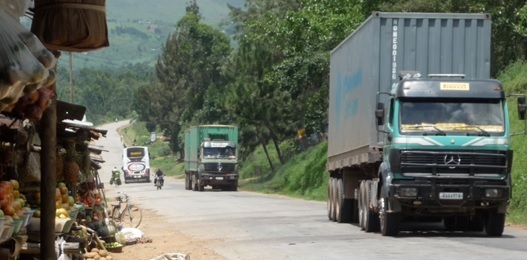Speeches Shim
The East African Community (EAC) is a regional intergovernmental organization of 6 partner states: the Republics of Burundi, Kenya, Rwanda, South Sudan, Uganda and the United Republic of Tanzania, with its headquarters in Arusha, Tanzania. The EAC is home to over 150 million citizens and with a land area of 1.82 million square kilometres. USAID supports EAC efforts to improve the quality of life of the people of East Africa through increased competitiveness, value-added production, enhanced food security, trade and investment.
Regional Development Objective Grant Agreement (RDOAG)
Once EAC became a Public International Organization, a Regional Development Objective Grant Agreement (RDOAG) was signed in 2016. The five year agreement focuses on shared objectives of sustainable economic integration across the region and strengthening EAC’s in trade and investment, environment, agriculture and health. USAID also provides support to the EAC through the East Africa Trade and Investment Hub and in parallel through investment in TradeMark East Africa. The selected activities and achievements below are the product of the partnership and the implementing partners in the region.
ACHIEVEMENTS IN TRADE
Implementing a Customs Union to enable East Africans to move goods regionally with fewer delays and less expense, including: the Customs Management Act to bring customs regulations and procedures into compliance with World Trade Organization (WTO) and World Customs Organization (WCO) standards; Harmonized Customs Procedures and Harmonized Customs Valuation Methods to guide adherence to international best practices; implementation of a common external tariff to rationalize duties on cotton, textiles, apparel and staple foods entering the EAC; and customs interconnectivity through adoption of the web-based RADDEx 2.0 system allowing centralized sharing of customs-clearance information, saving time and money, and increasing transparency.
Establishing a Common Market to liberalize trade in goods, services, cross border finance and the movement of people, including: Joint Border Committees to improve coordination between government agencies and the private sector at 16 key border posts; a Trade Help Desk, a web-based system with trade statistics and market access requirements to improve transparency; harmonization of standards for 22 staple foods to liberalize and increase regional trade; simplified certificate of origin to allow duty-free cross border shipment of EAC-origin goods worth less than $2,000, allowing small farmers and traders to increase trade, and regional financial deepening and integration to increase access to finance for underserved populations.
ACHIEVEMENTS IN HEALTH
- Strengthen health systems, policies and regulations to address the health needs of mobile and other vulnerable cross-border populations;
- Strengthen knowledge management, including sharing of regional research and best practices through East African Health Research Journal;
- Collaborated on regional responses to emerging pandemic threats;
- Provided technical assistance for the EAC One Health Platform, which strengthens collaboration across multiple sectors, including public health, livestock, wildlife, agriculture and environment.
ACHIEVEMENTS IN ENVIRONMENT
- To prevent and reduce wildlife crime, USAID launched the Wildlife Information and Landscape Database (WILD), a mobile phone application that improves collection, sharing, management and analysis of biodiversity information in East Africa. 440 conservation managers and community game scouts have been trained to use WILD in national and community protected areas.
- USAID focuses on biologically significant areas that are critical to the survival of unique, rare and endemic species and contribute valuable natural resources to local and national economies.
- A USAID assessment of the Lake Victoria Basin provided a comprehensive overview of current and plausible future climate scenarios and how they are likely to affect East African people and ecosystems. National experts from five countries discussed the assessment and suggested 25 adaptation options that could reduce these inevitable hardships. To support the lake’s conservation, USAID developed an investment plan that prioritizes and values conservation interventions.
- The U.S. Government’s National Aeronautics and Space Administration (NASA) and USAID are pioneering the use of space technologies for development efforts.


Comment
Make a general inquiry or suggest an improvement.